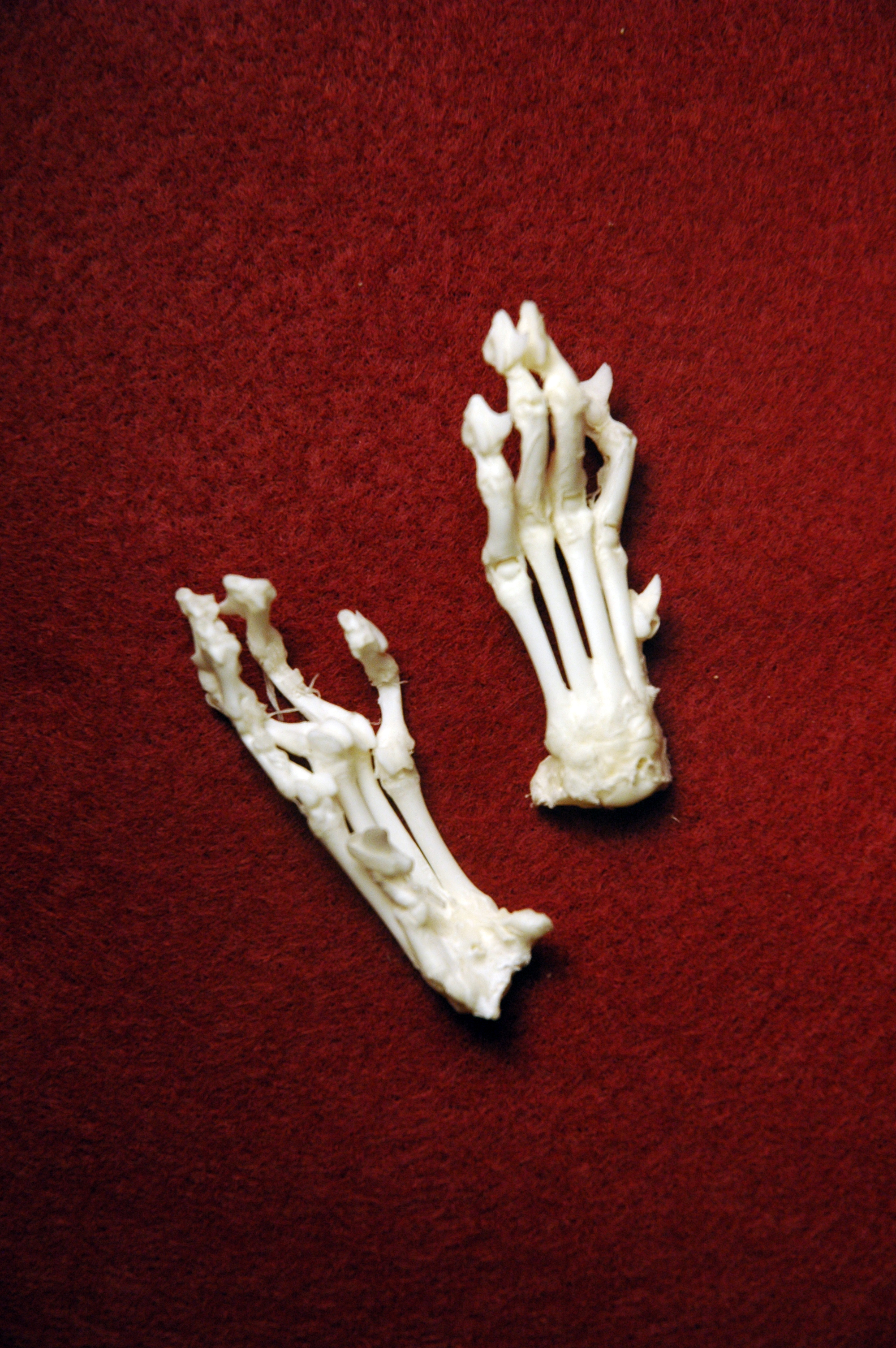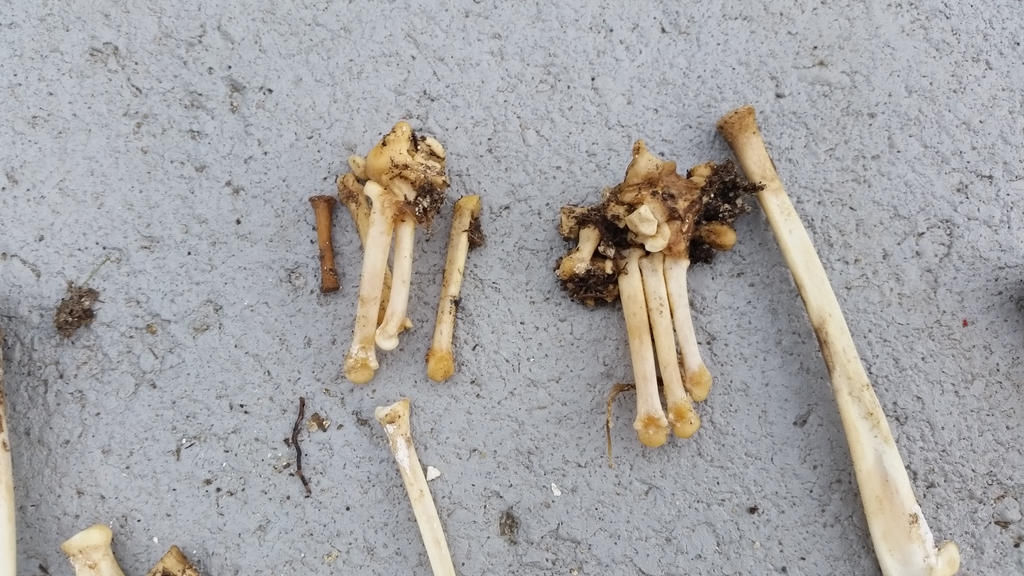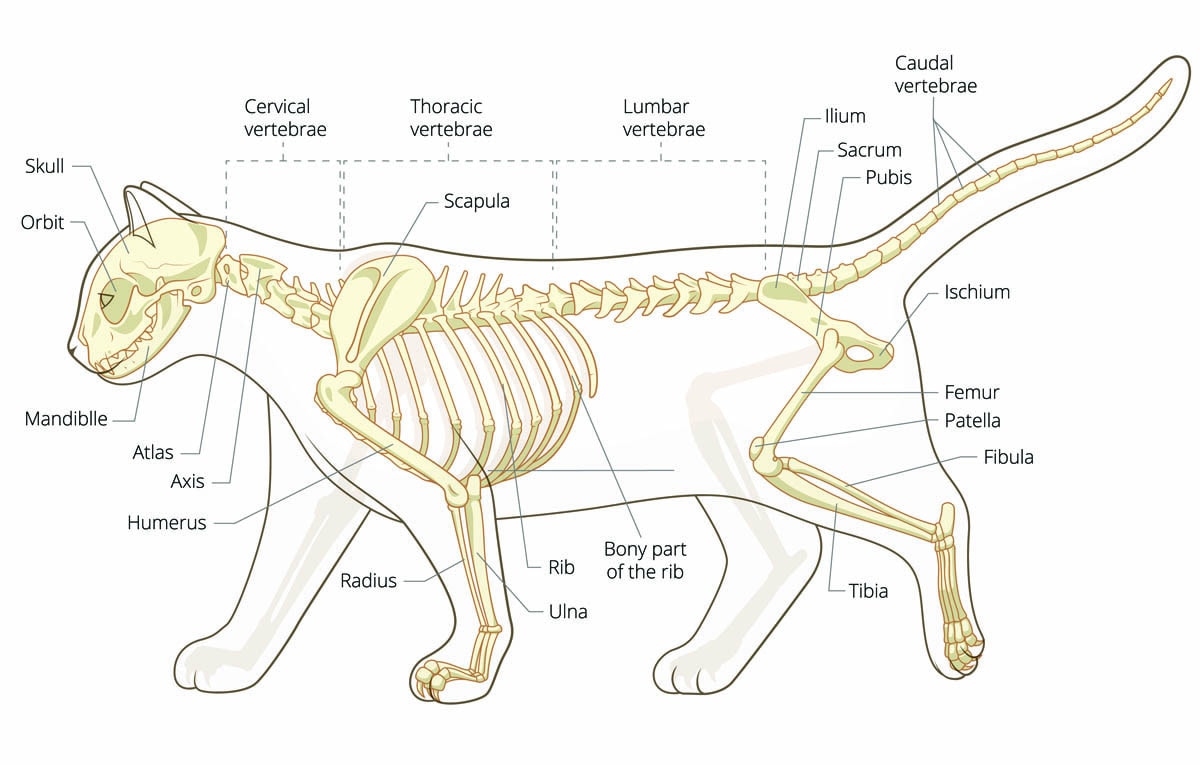
TRAP BROKE CAT BONES
Cats' paws allow our felines to move silently, yet make fearsome weapons when they unsheathe their claws. Cat Paw Bones. What about the ends of their legs, where our cats' skeletons meet the ground? Some interesting cat paw skeleton anatomy happens right at the tips of their toes, in the final phalanges (toe bones).

Пин на доске cat paw
A cats skeleton is very similar to that of a human being, however it does lack the shoulder blade bones. This allows freedom of movement of the foreleg, which can be turned in almost any direction.

Bobcat Left Front Paw by ksheridan on DeviantArt Animal skeletons
The paw consists of several bones that make it strong and sturdy. These include the carpal bone, metacarpal bone, phalanx bone, sesamoid bone, cuboid bone, navicular bone, proximal interphalangeal joint, distal interphalangeal joint and the pisiform bone. The paw also contains many muscles that allow the cat to move its limbs freely.

lion paw skeleton Поиск в Google Animal skeletons, Skull and bones
Bones in cats are structurally similar to those in humans. They provide support for body movement and protect internal structures like organs.. (thighbone) are the most common in cats. Tibia (shinbone) fractures are next, followed by pelvis, jawbone, paw, and tail fractures. Breaks are generally classified by type of bone, area of bone.

Cat Foot (Front Paw)
The bones in a cat's leg. Eye of a domestic cat. (Left) Front paw of cat with claws extend. (Right) A cat's paw seen from underneath. Skeleton. The hind limbs of the cat are much longer than the front ones; this enables the animal to leap high and run very fast. The vertebral column is continued into the tail, the bones of the tail being known.

Pin on Wolf and Dog Anatomy / References
Beneath the surface, cat paws hide a network of bones, tendons, muscles, and ligaments that work together harmoniously to create fluid movements. The structure allows cats to navigate various terrains effortlessly, whether it be climbing trees or tip-toeing across narrow ledges.

Pin by Cyndy Dent BrooksFetty on Animal Advocacy Cats, Animal
The bones, muscles, tendons, and ligaments all work together to allow the cat to move gracefully and efficiently. Cat paw anatomy paw infographic - Copyright Ruffle Snuffle® Normal cats have 18 toes—five on each front limb and four on each hind limb. The extra toe on the front paw is called the dewclaw.

Cat paw bones by Piucca on DeviantArt
30% Off Your First Auto Delivery. Australia's best pet food & supplies online shop

Museum of Osteology A tiger’s
Cat anatomy comprises the anatomical studies of the visible parts of the body of a domestic cat, which are similar to those of other members of the genus Felis . Mouth Sharp spines or papillae found in a cat's tongue. 5 types of papillae can be found in the dorsal aspect of the tongue: filiform, fungiform, foliate, vallate, and conical.

Cat Paw Skeleton Michael Arntz
In the cat paw anatomy, you will learn the bones, muscles, vessels, and digital pad structures in detail. I will show you all the cat paw pad anatomy structures with a diagram from both front and hind legs. Again, I will show you the difference between the normal cat and the polydactyl condition with a possible explanation.

How do cat paws work? How It Works
Contents show Anatomy of the Cat Paw What you can see above is the anatomy of a cat's front paw. The front paws of a cat comprise digital pads, metacarpal pads, dewclaws, and carpal pads, while the back paws consist of digital pads and metatarsal pads. Collectively, they are called paw pads.

Skeletal Anatomy of the Domestic Cat Chart Cat anatomy, Cat care, Cats
Shop For Top Products Now. Great Prices On Millions Of Items. Get It On eBay.

Pin on Dog
Cat paw pad, just like cat whiskers, has an interesting anatomy. The parts of a cat's paw help them to jump, walk, stand, and move around. Every cat has its own fingerprints. In fact, they are even able to open an iPhone 5S with the fingerprint sensor. Cat Paw Anatomy

38 Best Pictures Cat Anatomy Bone Names Assessment Of The Cat
The average cat has around 250 bones in total which are separated into three subunits: Appendicular: limb bones. Axial skeleton: skull, spine, ribs and sternum. Splanchnic: a bone in the soft organs of the body, unattached to the rest of the skeleton, the only example in the cat is the penis.

Bones of the CatAll About The Cat's Skeleton CatWorld
Cats' paws act as shock absorbers, minimizing discomfort from impact. Additionally, if you've ever seen damp pawprints, it's likely because cats sweat from their paws. Cat Claws. When it comes to cat anatomy and physiology, it's important to acknowledge the role of claws. Cats have 10 front claws and eight back claws (which matches.

Pin på Large Cats
1. Cats Have a Different Number of Toes on Each Set of Paws Cat paws are unique, and so is their structure. The number of digits (toes) on their paws can vary depending on whether they.